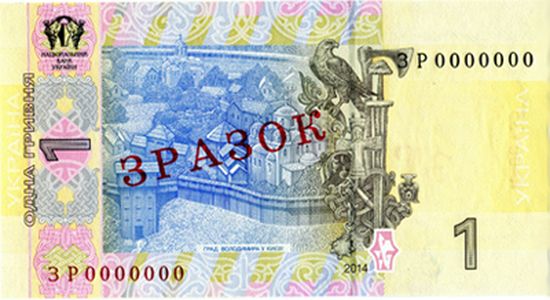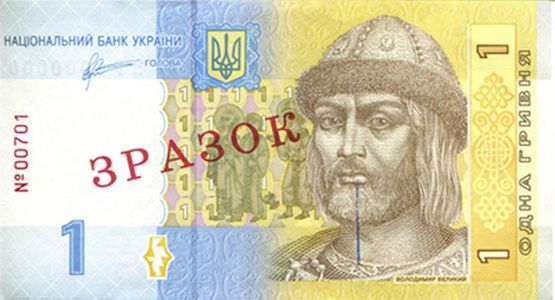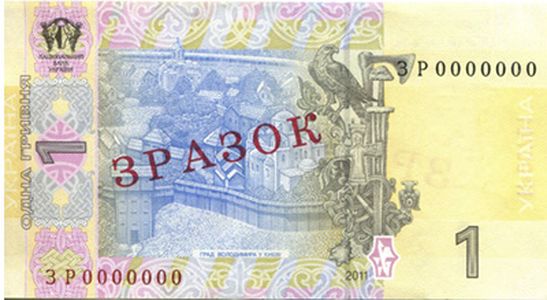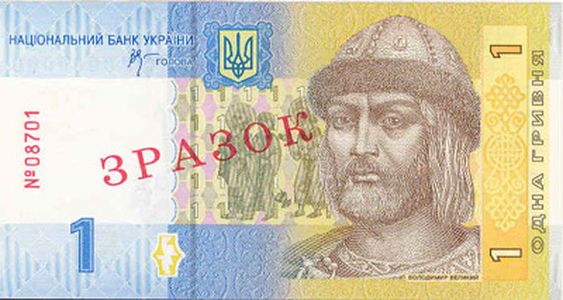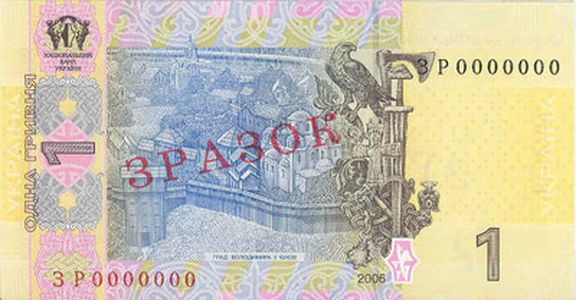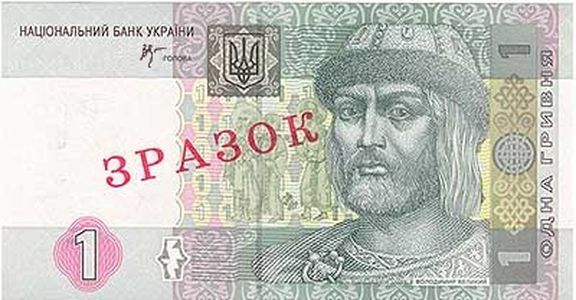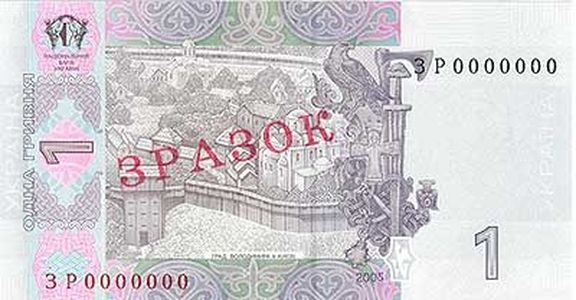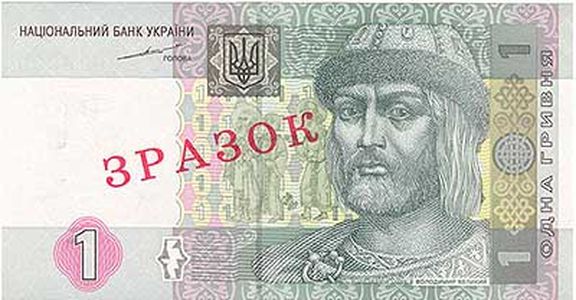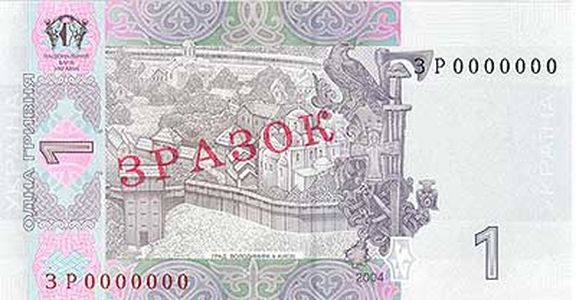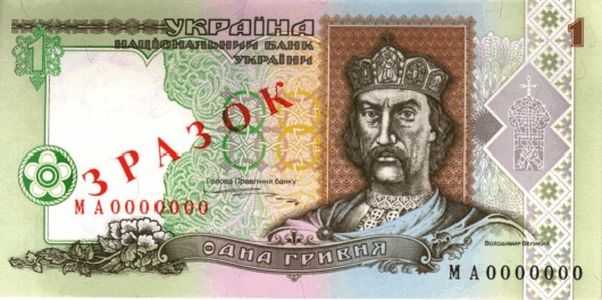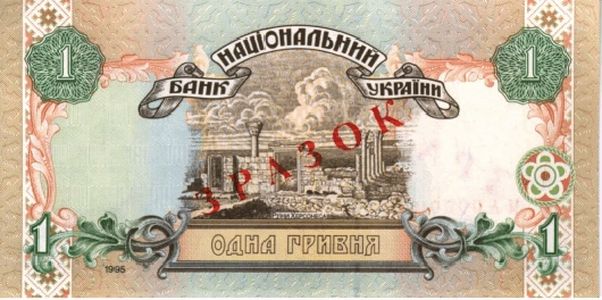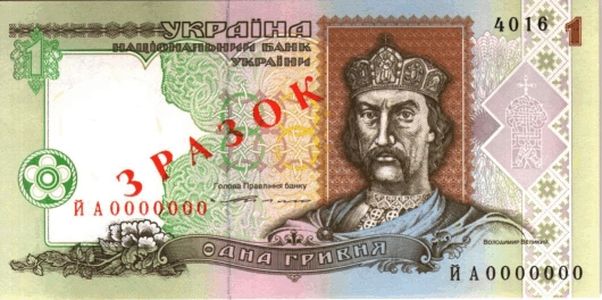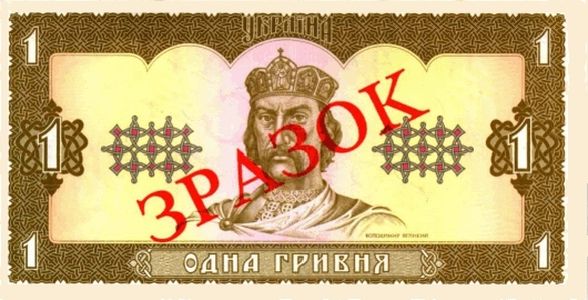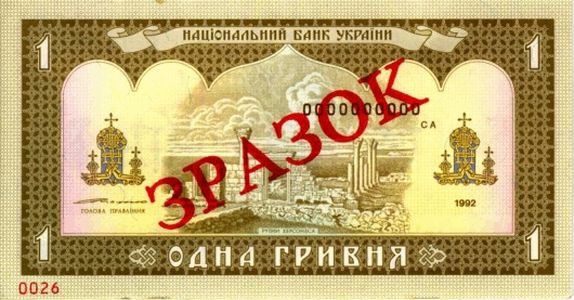On May 22, 2006 the National Bank of Ukraine puts into circulation 1 hryvnia banknote designed in 2006.
On the face side of the new banknote, as well as on the previous banknotes of this denomination, there is a portrait of Volodymyr the Great, whereas on the reverse side instead of the remains of Chersonesus Tauricus there is a diorama of Volodymyr’s Burg in Kyiv.
Volodymyr the Great was a Grand Duke of Kyiv (980-1015). During his rule a rise of the Kyivan Rus as a solid community and a great power started off and all the Eastern Slavic lands were united under the dominion of Kyiv. In 988-989 Rus was Christianized on his initiative.
Volodymyr’s Burg in Kyiv (Detynets) – under such a denomination known is the citadel whose construction Volodymyr started as soon as he had taken possession of Kyiv.
In the end of the 10th century the wall system of Kyiv Detynets (citadel) contained several gates. One gate was for passage to Podil, another – in the direction of Pechersk, one more was for passage in the direction of St. Sophia Cathedral.
The main edifice of the 10th century Kyiv was the famous Tithe Church whose foundation was laid, according to the Tale of Bygone Years, in 989. In 996 the construction was completed and the church was consecrated.
Security elements
The banknote is printed on the untinted paper.
Banknote size (63x118) mm.
The dominating color of the design of the banknote – yellow-blue.
1. Watermark
A multi-tone portrait, formed by the internal structure of paper, has a fixed position on the banknote and becomes visible when the banknote is held up to the light. Repeats the portrait printed on the face of the note.
1a. Light Watermark Element
Imprint of the hryvnia logo is visible when looking at the banknote against the light.
2. Security Thread
A fully embedded into the paper polymer thread with the following transparent direct and inversed images: “1 ГРН”, a trident and the underlined denomination “1”.
3. Letterpress Printing
A printing method thanks to which on the paper formed is an ink overprint thickened at the stroke edge together with a printout embossed in deep relief (serial numbers on the banknote back side).
The serial numbers printed:
1) with black inks having magnetic properties;
2) with red inks glowing under the UV light in yellow-red color.
4. See -Through Element
Printed elements on the face and on the back of the banknote which complement each other and form the letter “У” when the note is held up to the light.
5. “Orloff” Printing
A special type of printing which forms a pattern with the ink of different colors ensuring an abrupt change of one color into another without intermittence and displacement of graphic elements of the pattern (lines, planes).
6. Microtext
Repeated inscriptions which can be read with magnifying glass.
7. Antiscanning Grid
Thin lines placed at different angles which form a moire pattern when copied or scanned.
8. Rainbow Printing
Special type of printing ensuring a smooth change of one color into another without intermittence and displacement of graphic elements of the pattern.
9. Security Fibers
Chaotically embedded into the paper invisible security fibers glowing in red and green colors under the UV light.










